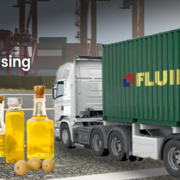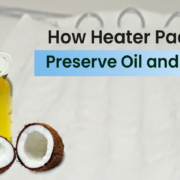Applications of Food Grade Flexitanks in Global Edible Oil Supply Chains
The global demand for edible oil has grown steadily, driven by rising consumption in households, food processing units, and the hospitality industry. With large-scale exports and imports involved, one thing remains critical: maintaining the purity and quality of oil during transit.
Food-grade flexitank is a game-changer solution in bulk liquid transport that is transforming the edible oil supply chain. From cost savings to reduced contamination risk, these specially designed containers are becoming the preferred mode for transporting vegetable oils, palm oils, coconut oils, and more.
Why Food Grade Flexitanks Are Ideal for Bulk Liquid Transport of Edible Oils
Shipping edible oil across continents is not without challenges. Exposure to oxygen, contamination from previous cargo, leakage, or drastic temperature shifts can lead to product degradation, loss, or even rejection upon arrival. Traditional methods like drums, ISO tanks, and IBCs often come with limitations like higher costs, complex handling, or cleaning requirements.
Food-grade flexitanks, designed using multi-layer virgin polyethylene, offer a safer and more cost-effective alternative. These single-use tanks are fitted inside 20-foot containers where they are approved for food-grade applications. They keep the oil uncontaminated, minimize residue, and ensure easier discharge.
For businesses involved in bulk liquid transport, this means higher payload capacity, fewer operational hassles, and greater compliance with international food safety norms.
Maintaining Quality with Heating Pads in Food Grade Flexitanks
Certain edible oils solidify in cooler climates, leading to blockages during unloading. That is where integrated heater pads make a significant difference.
Heater pads are installed at the bottom of the flexitank where they are activated at the point of discharge. They gradually warm the contents to restore flowability without compromising quality. This allows exporters to ship temperature-sensitive oils with confidence, knowing the discharge process will be smooth and waste-free.
For manufacturers and distributors, this feature protects product integrity and reduces demurrage charges due to delayed unloading.
Key Applications in the Edible Oil Supply Chain
Food-grade flexitanks are used across multiple nodes of the edible oil supply chain that includes:
- Exporters of palm oil, soybean oil, and sunflower oil are looking to ship large volumes efficiently
- Importers and wholesalers who need hygienic, ready-to-use oil without the hassle of container cleaning
- Distributors aiming to reduce packaging and handling costs while maintaining food safety
- Food processors who want direct input of clean oil into production without repackaging
These applications have resulted in lower carbon footprint, less packaging waste, and fewer losses in transit.
Why Choose a Trusted Flexitank Manufacturer
When it comes to food-grade products, choosing the right flexitank manufacturer is critical. Poor-quality tanks can rupture, leak, or even taint the product due to substandard materials.
Rishi’s Fluid Flexitanks are engineered to meet the strictest global food safety standards. Made from FDA-approved materials, they provide:
- Seamless construction to avoid contamination
- High tensile strength to resist rupture
- Maximum payload with minimal residue
- Optional heater pads for oils prone to solidification
With dedicated global support and a track record of reliability, Fluid Flexitanks offer peace of mind from origin to destination.
Your Edible Oil Deserves the Best – Choose Food Grade Flexitanks
Do not compromise on the quality of your edible oil during transport. Whether you are an exporter, importer, or distributor, food-grade flexitanks provide a reliable, cost-efficient, and food-safe solution for your bulk shipping needs. Make the smart move to protect your brand and your product.
Contact our experts today to learn how Fluid Flexitanks can optimize your edible oil logistics and keep your supply chain flowing.
FAQs:
- What are food-grade flexitanks used for?
They are used to transport edible oils and other food-grade liquids safely and in bulk. They prevent contamination and are approved for global food logistics. - Do food-grade flexitanks require cleaning?
No. They are single-use tanks designed to eliminate cleaning costs and reduce contamination risks, ensuring product hygiene throughout transit. - How do heater pads work in edible oil flexitanks?
Heater pads gently warm the oil at the point of discharge, restoring fluidity in solidified or semi-solid oils like tallow and coconut oil. - Can food-grade flexitanks be used in international shipping?
Yes. They are widely used for cross-border shipments of edible oil and comply with FDA and other international food safety standards.


